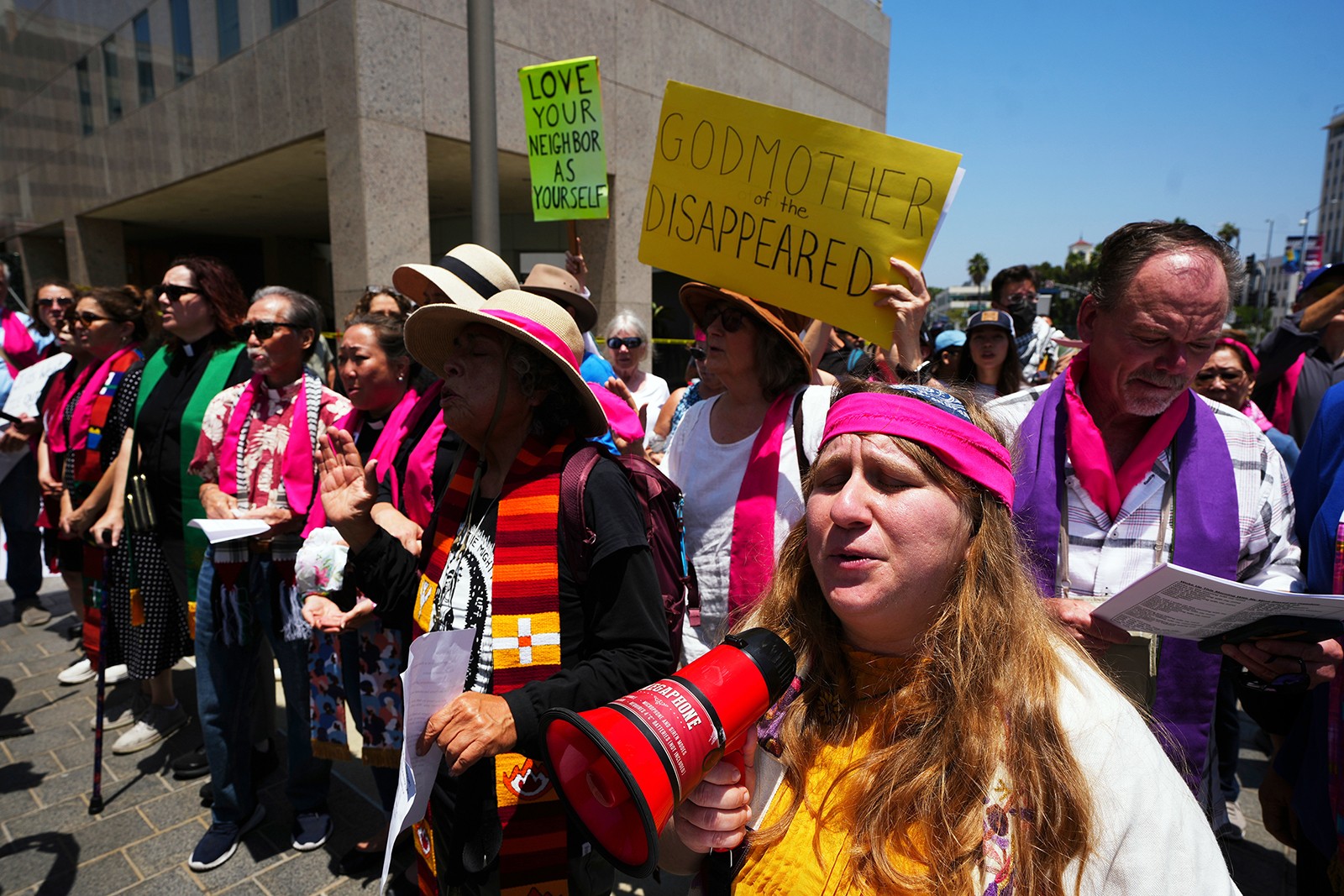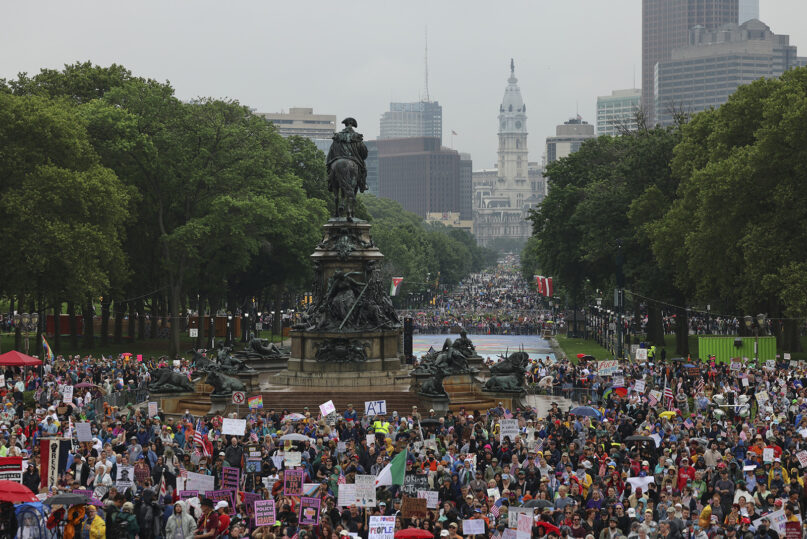
(RNS) — Footage from America’s most recent mass protests shows clergy on the frontlines. Black preachers lock arms with rabbis to form a line to protect protesters from law enforcement in downtown Los Angeles. The Rev. William Barber II stirs the masses with an anti-authoritarian sermon at the “No Kings” rally in the capital.
In an era of religious decline, interfaith, anti-fascist activism is redefining the role of the minister protest. In a post-Occupy world, with its preference for decentralized insurgency, religious leaders are rarely movement figureheads as they were in previous eras — think Malcolm X or the Rev. Martin Luther King Jr. Instead, ministers are invited to support the movement, but not to lead.
In this shift in Black freedom movements, the Ferguson uprisings of 2014 to 2016 were the watershed moment. Previous racial justice movements would appropriate the resources of the Black church — primarily the social capital, oratory skill and charisma of its leaders, repurposing their institutional capacity for their cause. But Ferguson’s activists, protesting the police killing of a young Black man, Michael Brown, deliberately rejected clergy’s attempt to be the movement’s leaders. They told ministers who’d come to help that the church had historically been part of the larger problem, complicit in misogyny, homophobia and other systems of oppression linked to white supremacy.
The moral authority and symbolism of ministers used to be crucial in creating what practitioners of nonviolent resistance call “dilemma actions.” In a 2011 incident at University of California Davis, for instance, university police pepper-sprayed seated student protesters. The excessive use of force outraged the public because of the obvious asymmetry — armed agents versus seated, unarmed, young people. By luring the authorities across the lines of public conscience, costing them social capital or political power and provoking more people to join the uprising, such “dilemma actions” put the opponent in a position where they either have to cede power — allow the protesters to stay — or cross a red line and trigger public outrage.
Due to the secularization of mainstream society (not to mention the many moral failures of religious leaders and institutions), clergy no longer serve this purpose with the same clarity.
Even so, ministers are still finding their way to make a significant impact in their new supporting roles in civil resistance.

Demonstrators fill Eakins Oval in front of the Philadelphia Museum of Art during the “No Kings” protest, June 14, 2025, in Philadelphia. (AP Photo/Yuki Iwamura)
The Rev. Edward Anderson, senior pastor of McCarty Memorial Christian Church, can be seen at a June rally in Los Angeles, among a line of ministers protecting local protesters from violent repression. “We stood in moral courage and created a line to demonstrate: Enough to the physical violence, overreach and ripping apart of our families,” he told me. “Los Angeles is for everyone and, as Scripture says, we are not of those who shrink back to destruction, but have faith for the preservation of our souls, city and democracy.”
Pastor Inés Velásquez-McBryde, pastor of The Church We Hope For in Pasadena, California, had just finished co-leading a prayer vigil at a June protest when the demonstrators were confronted by law enforcement. “The curfew time hit — which I didn’t know was enacted — and at the time SWAT teams came over the overpass and stopped our group from walking back.”
Velásquez-McBryde has been training her church on “how to respond spiritually and ethically to this administration since after the election last year,” she said, so she expected some kind of conflict. The agents fired rubber bullets and fireworks at the crowd, she reported, but she and other clergy guided protesters safely through the encounter.
“It was a tense 10 minutes. We told people around us, ‘Don’t run,'” she said. “It felt like we had the Red Sea ahead of us and Pharaoh behind us, (but) I was not afraid. We linked arms and quickly began turning around and back to our cars.”
This is how today’s protesting ministers are likely to participate — not playing the part of Moses, but of medic: doing the gritty pastoral work of supporting their communities on the perilous path to liberation.
Movements still need strong leaders. However, strong leadership doesn’t always mean pontificating before the multitudes. Sometimes, strong leadership happens on your knees, washing the disciples’ feet.
